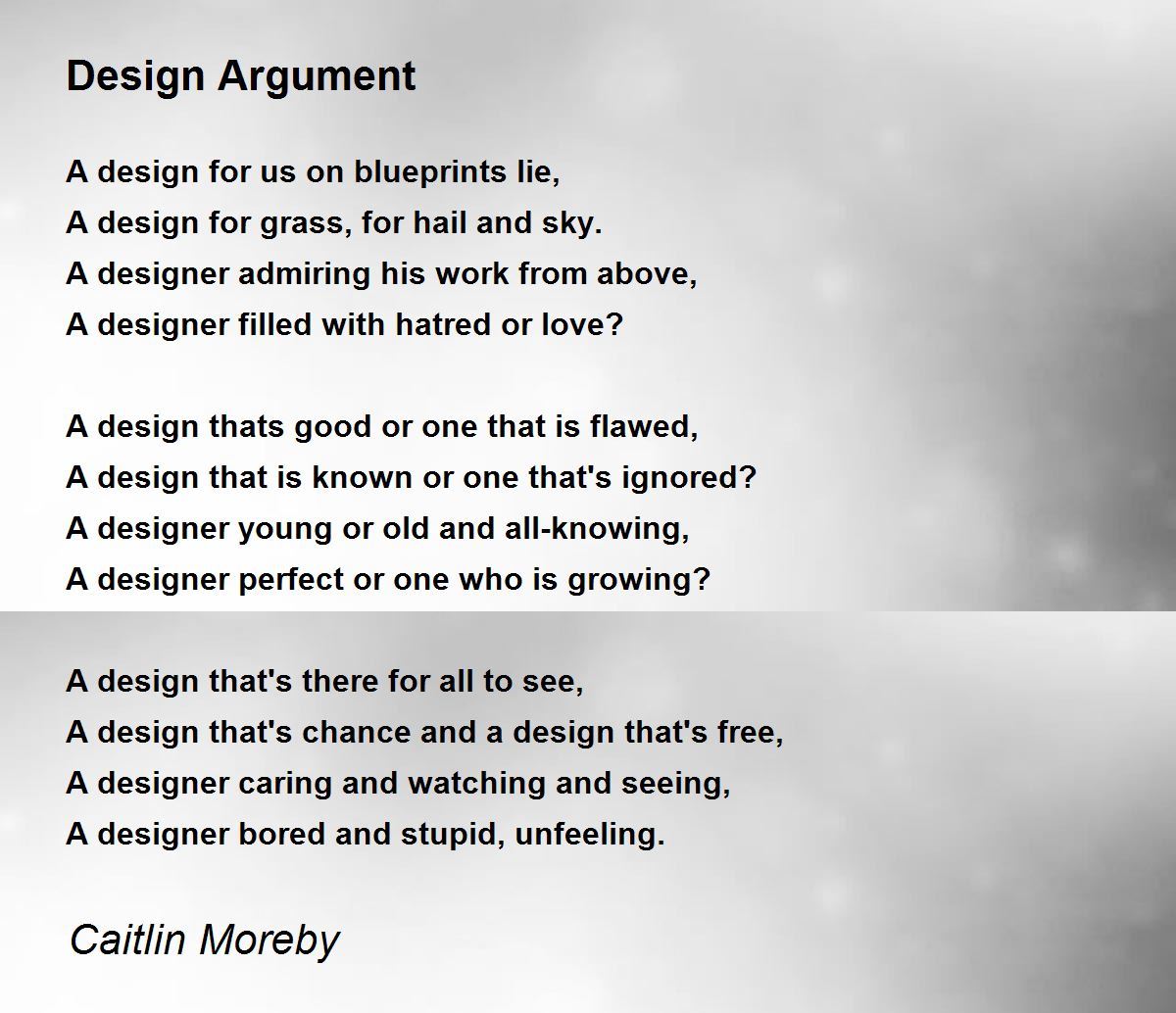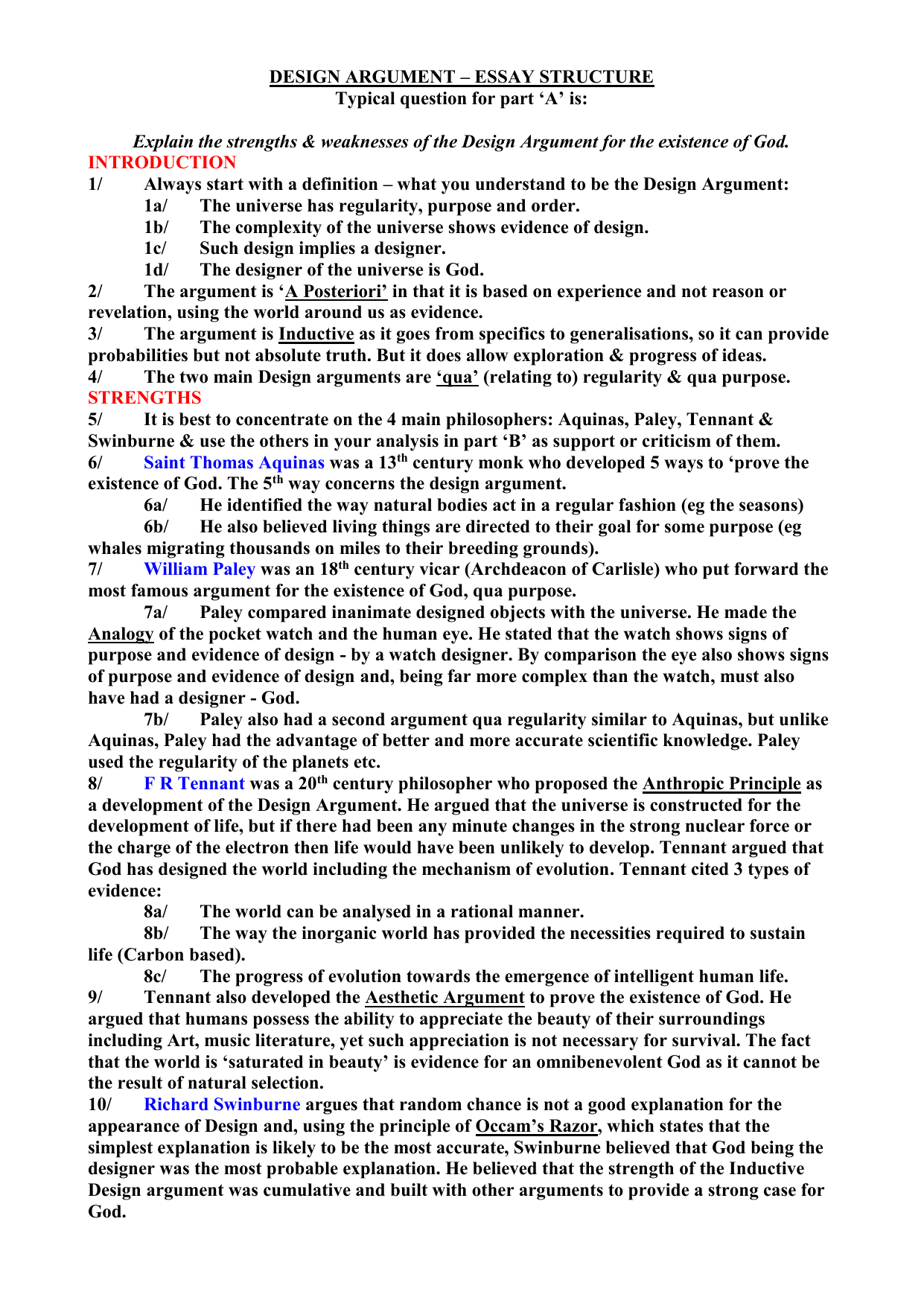Table Of Content

As a logical matter, the mere fact that some existing thing has a feature, irreducibly complex or otherwise, that would be valuable to an intelligent being with certain properties, by itself, does not say anything about the probability that such a being exists. Since the world, on this analysis, is closely analogous to the most intricate artifacts produced by human beings, we can infer “by all the rules of analogy” the existence of an intelligent designer who created the world. We never argued that the universe is specifically fine-tuned for intelligent life.
Book summary page views
We said that the constants are fine-tuned for atoms, molecules, planets, life, stars, galaxies, etc. There is nothing about the way we formulated that argument that brings in the problem of evil. Many scientists loathe to accept the existence of an intelligent cause; it sounds too similar to the God they automatically reject as impossible. Their most prominent alternative is the multiverse, which posits the existence of an infinite number of unobservable parallel universes, each with different values for the constants.
The Design Argument: Answers to Atheists' Objections - Aish
The Design Argument: Answers to Atheists' Objections.
Posted: Fri, 25 Feb 2022 15:08:34 GMT [source]
Alternative Explanation
Suppose that anelderly uncle dies in suspicious circumstances, and a number of therelatives believe that the correct explanation is the direct agency ofa niece who is primary heir, via deliberately and directlyadministering poison. However, forensic investigation establishes thatthe cause of death was a mix-up among medications the uncle wastaking—an unfortunate confusion. The suspicious relatives,however, without missing an explanatory beat shift the niece’sagency back one level, proposing that the mix-up itself wasorchestrated by the niece—switching contents of prescriptionbottles, no doubt. What had earlier appeared to bepurpose (requiring intent) was now apparently revealed asmere unintended but successful and preserved function. However, theologian Alister McGrath has pointed out that the fine-tuning of carbon is even responsible for nature's ability to tune itself to any degree. If God did not exist, the applicability of mathematics would be just a happy coincidence.2.

Book contents
From a much more positive point of view, his wonder at the complexity of the natural world, expressed with sincerity and style, is something to which all evolutionary biologists can relate. It is to be hoped that, in time, it will be for this reason alone that Paley’s classic treatise retains its significance. Unlike modern proponents of “intelligent design,” Paley is totally forthright in his view on the identity of the designer. As he concludes at the close of Chapter 23, “The marks of design are too strong to be gotten over. From this starting position, Paley proceeds in Chapters 24 through 26 to rally evidence from nature for the omnipotence, omniscience, and benevolence of the Designer. He must, therefore, contend with examples not only confirmatory (e.g., the good fit of organisms to their needs, the capacity for pleasure) but also seemingly contradictory (e.g., death, disease, predation, pain) to such a theological stance.

The design argument is one of three main arguments for the existence of God; the others are the ontological argument and the cosmological argument. Unlike the ontological argument, the design argument and the cosmological argument are a posteriori. And whereas the cosmological argument can focus on any present event to get the ball rolling (arguing that it must trace back to a first cause, namely God), design theorists are usually more selective.
Where's Waldo and the Design Argument - Aish
Where's Waldo and the Design Argument.
Posted: Thu, 22 Sep 2022 07:00:00 GMT [source]
Physical World as Manifestation of Divine Consciousness
While this is a popular stance, it is a promissory note rather than anexplanation. Assuming that fine-tuning does require an explanation, there areseveral approaches one might take (Koperski 2015, section 2.4). Three approaches have been taken to undermine the demand forexplanation presented by fine-tuning. However, (a) – (d) are incomplete in a way directly relevant tothe present discussion.
Hindu Arguments Against the Existence of God
"Who ever said that human life should be infinite?" Dunno."As for evolution, give me an example of one species that evolved from other species." Species evolve until they have new members that can longer interbreed with the earlier menbers - you then have a new species. Examples are the various species of dinosaur and the present day birds that evolved from dinosaurs. "BTW, why there are one-cell living organisms? Why they don't evolve" - they have done, but that does not mean the earlier version no longer exists.
Western Theistic Responses to the Problem of Evil
The non-creationist approach starts most clearly with Aristotle, although many thinkers, such as the Neoplatonists, believed it was already intended by Plato. This approach is not creationist in a simple sense, because while it agrees that a cosmic intelligence is responsible for the natural order, it rejects the proposal that this requires a "creator" to physically make and maintain this order. The Neoplatonists did not find the teleological argument convincing, and in this they were followed by medieval philosophers such as Al-Farabi and Avicenna. Later, Averroes and Thomas Aquinas considered the argument acceptable, but not necessarily the best argument. Cicero (c. 106–c. 43 B.C.) also made one of the earliest known teleological arguments. In de Natura Deorum (On the Nature of the Gods) Cicero stated, "The divine power is to be found in a principle of reason that pervades the whole of nature".
The historical arguments of interest are precisely the potentiallyproblematic ones—inferences beginning with some empiricalfeatures of nature and concluding with the existence of a designer. Astandard but separable second step—the natural theologystep—involves identifying the designer as God, often viaparticular properties and powers required by the designing inquestion. Although the argument wielded its greatest intellectualinfluence during the 18th and early 19th centuries, it goes back atleast to the Greeks and in extremely clipped form comprises one ofAquinas’s Five Ways.
As a general scientific principle, the Prime Principle of Confirmation can be applied in a wide variety of circumstances and is not limited to circumstances in which we have other reasons to believe the relevant conclusion is true. If the observation of a fine-tuned universe is more probable under the Theistic Hypothesis than under the Atheistic Single-Universe Hypothesis, then this fact is a reason for preferring the Design Hypothesis to Atheistic Single-Universe Hypothesis. First, while it might be clear that carbon-based life would not be possible if the universe were slightly different with respect to these two-dozen fine-tuned properties, it is not clear that no form of life would be possible. Second, some physicists speculate that this physical universe is but one material universe in a “multiverse” in which all possible material universes are ultimately realized. If this highly speculative hypothesis is correct, then there is nothing particularly suspicious about the fact that there is a fine-tuned universe, since the existence of such a universe is inevitable (that is, has probability 1) if all every material universe is eventually realized in the multiverse. Since some universe, so to speak, had to win, the fact that ours won does not demand any special explanation.
Some advocates seedesign arguments as inferences to the best explanation, taking designexplanations—whatever their weaknesses—as primafacie superior to chance, necessity, chance-driven evolution, orwhatever. The intuition they were attempting to capture involvedproperties that constituted some degree of evidence for design, notjust because such properties happened to be often or even onlyproduced by designing agents. When we see a text version of the Gettysburg Address, thattext says mind to us in a way totally unrelated to anyinduction or analogy from past encounters withwritten texts. It was that type of testimony to mind, to design, thatsome historical advocates of design arguments believed that they foundin some Rs observed in nature—a testimony having nodependency on induction or analogy. Beauty, purpose and in generalvalue especially when conjoined with delicate complexity werepopular underlying intuitive marks. Intricate, dynamic, stable,functioning order of the sort we encounter in nature was frequentlyplaced in this category.
From this sole argument I cannot conclude anything further than that it is probable that an intelligent and superior being has skillfully prepared and fashioned the matter. I cannot conclude from that alone that this being has made matter out of nothing and that he is infinite in every sense. Contemporary defenders of the teleological argument are mainly Christians,[12] for example Richard Swinburne and John Lennox.
As explained in the introduction to philosophy chapter and earlier in this chapter, karma may be thought of as the causal law that links causes to effects. Assuming the doctrine of interdependence, karma asserts that if we act in such a way to cause harm to others, we increase the amount of negativity in nature. As the self moves through rebirth (samsara), the karmic debt incurred is retained. Teleological arguments examine the inherent design within reality and attempt to infer the existence of an entity responsible for the design observed. Teleological arguments consider the level of design found in living organisms, the order displayed on a cosmological scale, and even how the presence of order in general is significant. The main difficulty with this suggestion is that all life requires ameans for overcoming the second law of thermodynamics.

No comments:
Post a Comment